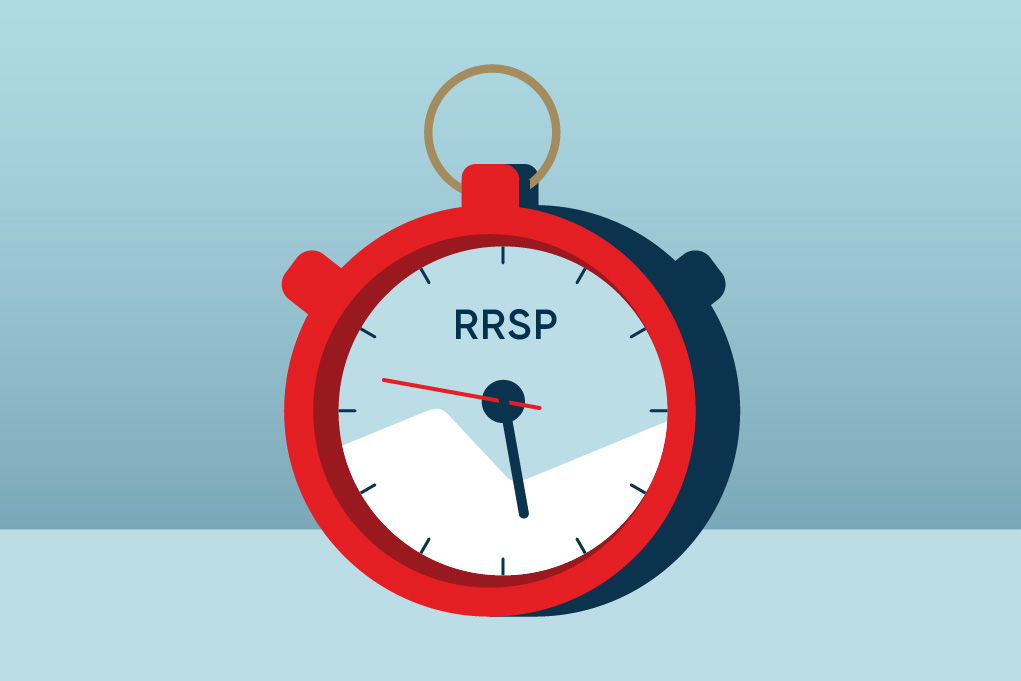How do I start catching up on saving for my retirement?
Are you asking yourself how much you need to retire? Good question.
Here's an idea of where you should be based on your age. It'll tell
you if you have some catching up to do.
Remember: This
will give you an idea, but it's not an exact science. Knowing how
much you need to save depends on several factors like your debts
and whether you have a pension plan. In this example, we'll look at
the case of someone who started saving for retirement when they were
30 by putting aside 18% of their income each year (RRSP contribution
threshold). They have a Balanced
investor profile and plan to retire at age 65.
- At age 35, you should have saved the equivalent of your annual income
- At age 40, 2.1 x your annual income
- At age 50, 4.6 x your annual income
- At age 60, 8.5 x your annual income
- At age 65 (retirement age) 11.3 x your annual income
Talk to an expert
Have you fallen behind in saving for retirement? The first thing to do so you can start catching up is talk to an expert. With your financial advisor or planner, you'll take stock of three important elements for planning your retirement:
- Your budget: By looking at your income and expenses, you can determine how much you're able to save.
- Your financial balance sheet: This is like a snapshot of your current situation. It helps you to determine whether your current savings and your financial plan for retirement are enough to reach your goals.
- Your financial plan for retirement: A bit like a roadmap to your goals and retirement dreams, your financial plan helps you determine how much you'll need to save and how you're going to do it.
How do I optimize my retirement savings?
Reduce your spending
Easier said than done? You said it. You'll have to draw up a budget,
but in most cases it's doable. Take a closer look and you may find
that increasing your retirement savings is in fact realistic. Start
with simple things like eating out less often and adjusting your
expenses. There
are plenty of tips to help you save money.
Could
spending less and saving more be the way to go? It'll take discipline,
and reducing your current standard of living isn't simple, but bear in
mind that it will lead to a more comfortable retirement.
Remember that as you get older, saving can get easier (the kids have
moved out and your earnings may have increased as well).
Repay your debts
Another way to optimize your retirement savings is to repay
your debts. Repaying debts can eat up a big part of your budget,
and saving can be hard when you have debts to repay. But not all debts
are created equal; some can be more urgent than others and should be
repaid first.
In other cases, it may be better to save
than to repay the entire debt right away. This is usually determined
by how much interest you're paying and whether some of the interest is
tax deductible. Talk to your financial planner or advisor about it.
Together you can determine the right strategy for you.
Maximise your contributions
There are several registered plans designed to encourage you to save. Here are three of them:
- Registered Retirement Savings Plan (RRSP): You can contribute up to 18% of your annual income to an RRSP each year. When it comes time to do your tax return, your RRSP contributions are deducted from your taxable income, which could ultimately lower the amount you pay in taxes. The income generated by your RRSP isn't taxable either, as long as you don't make a withdrawal. RRSP withdrawals are taxed, but if your income is lower when you make the withdrawal, you'll be paying less in tax. Good to know—there are strategies for spreading out your income tax deductions so you can save as much as possible.
- Tax-Free Savings Account (TFSA): The income generated in this account is not taxable and you're not taxed if you make a withdrawal either. Good to know—like RRSPs, TFSAs have a maximum contribution limit.
- Registered Education Savings Plan (RESP): Less well known, RESPs let you save for your kids' education and receive government contributions as well (conditions apply). Any returns generated are tax free. In short, this can free up some money in your budget to put toward your retirement savings. Good to know—if you don't end up using the RESP because your kids don't pursue their studies, you can transfer up to $50,000 from the RESP to your RRSP, provided you have unused RRSP contribution room.
When it comes to choosing how to save for your retirement, there's more than one right strategy and one right plan. Whether you choose an RRSP or TFSA, for example, depends on a number of factors, so it's important to speak to a specialist. They'll help you draw up the right plan based on your situation.
Systematic savings
Have you thought about using a systematic savings plan? It lets you save without having to think about it. You choose the amount and the frequency (e.g., every payday) of automatic deductions from your account. You can opt to automatically transfer money to any type of account, like a classic savings account, TFSA or RRSP.
Reinvest your tax refunds
Whenever possible, try to reinvest your income tax refunds in your RRSP or TFSA, or use them to pay down your debts. Pro tip: Contributing to your RRSP could result in a tax refund the following year. This helps your savings grow year after year. It's a great way to get your money working for you.
Consider an RRSP loan
When it comes to RRSPs, getting started is often the hardest part.
With an RRSP
loan, you borrow money to contribute to your RRSP, and it could be
a good solution for you. By having to repay your loan each month, you
develop the discipline required to save for retirement. If you receive
a tax refund after making an RRSP contribution, you can easily use it
toward repaying your loan—you'll repay the loan more quickly and pay
less interest too.
Pro tip: Think about making it a
short-term loan (e.g., one year) so you can repay it as quickly as
possible. Check the interest rate on the RRSP loan against the
interest you expect to earn with your RRSP. To make borrowing worth
your while, the RRSP interest you'll earn should be higher than the
loan interest you'll pay.
Stay informed
Sign up for our newsletter to get recent publications, expert advice and invitations to upcoming events.
How do I increase my retirement savings?
Downsize your home
Do you own your home? You might consider selling and moving to a less expensive home when you retire. This could provide an injection of funds to use as a cash reserve for your retirement. It's important to be aware that real estate values can vary over time according to the market, so it's best not to depend solely on your home for your retirement capital. Mortgage rates can go up (resulting in higher monthly payments) and depending on the period, it can be a buyers' or sellers' market.
Rent out your property
Homeowners might consider renting out all or part of their property—a cottage, a room or a basement apartment—to generate income. Check out the rental rules in effect in your municipality, province or territory before doing so, however, to make sure it's legal.
Work part time
To earn additional income, you may also wish to work part time during retirement. It's probably best to check the tax impacts on your other income sources before sending out your resume.
Should I delay my retirement so I can save more?
When possible and if necessary, you might consider delaying your retirement by a few months or even a few years. It would allow you to continue receiving your salary a little longer, maximize your retirement savings and continue contributing to registered savings plans like your RRSP and TFSA. You can also take advantage of:
- Certain government incentives, such as tax credits, put in place to encourage you to delay your retirement. In addition, some government retirement benefits will increase if you opt to start receiving them later.
- Additional savings: You'll contribute longer and earn compound interest before you start withdrawing from your retirement investments.
You could also consider revising your goals for retirement instead of delaying it. In the end, what's most important when you're behind in saving for retirement is to get professional advice and take action. No single solution works for everyone, but there are all sorts of strategies to help you reach your goals and maintain your lifestyle after retirement. We're here to answer your questions.



